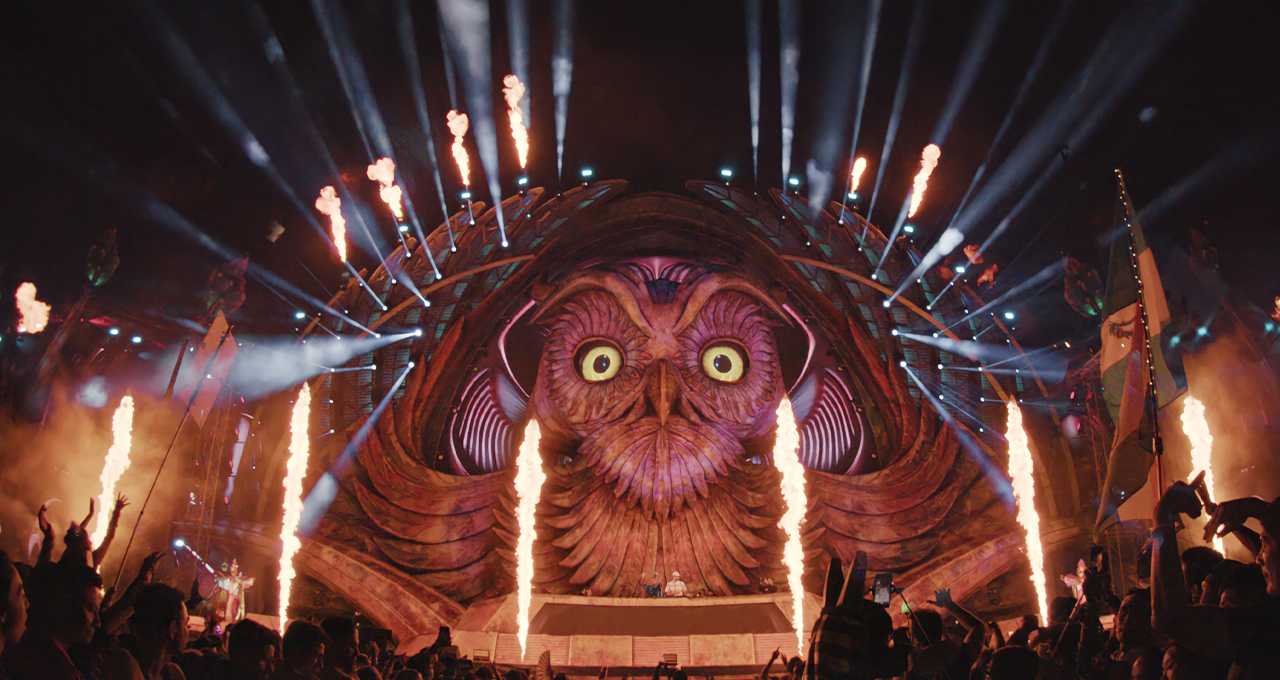See how AI takes the tedium out of advanced video editing in In the NVIDIA Studio

NVIDIA’s graphics cards have long been accelerating workflows of creative artists, speeding up processes and freeing creators up to spend more time creating and less time waiting for an edit to take effect or a render to finish baking. A new generation of NVIDIA GPUs is here with the GeForce RTX 40 series, which is set to bring another leap in these capabilities.
The new generation brings enough power to do more and do it all faster. Artists can create works in physically simulated environments with ray-traced visuals and realistic materials all in real time. The extra speed offered by DLSS 3’s AI-powered frame generation makes a smoother and quicker viewport experience for navigating those 3D environments. Churning out a final product gets better and faster with AV1 dual encoders in the RTX 40-Series as well, whether it’s for an edited video or a livestream is up to the creator.
That’s just a small sample of the capabilities available to creators through NVIDIA’s tech. There’s always more coming down the pipe, too, and In the NVIDIA Studio provides a regular window into what new tech is coming, showcasing just how different artists are putting it into action and celebrating their work. This week, the artist in the spotlight is video editor Sabour Amirazodi.
Amirazodi went to the Electric Daisy Carnival music festival in Las Vegas over the summer, and captured extensive footage of the world-class DJ sets, the crowds, the expert lighting, and the pyrotechnics. All of this was captured at 12K and 8K resolution, giving him computationally challenging content to work with.
With the help of four of NVIDIA’s RTX A6000 GPUs, Amirazodi was able to edit his footage in Blackmagic Design’s DaVinci Resolve 18, adding stunning visual effects that would have taken a substantial lift and countless hours of manual effort to achieve without that aid of AI acceleration.
Here’s a quick mash-up of the editing tech that lets Airazodi dramatically accelerate his creative workflow with the power of RTX:
With AI speeding up his edits, Amirazodi was able to add complex rotoscoping effects in a flash, letting DaVinci Resolve use AI to automatically rotoscope a selected object across multiple frames instead of requiring Amirazodi to tediously mask the item to be rotoscoped frame by frame.
Similarly, AI helped create depth masks so Amirazodi could separate different layers of his shots and effects selectively, such as to the crowd, without needing to carefully avoid applying the effects to the performers on stage. He could even add effects onto surfaces and have AI keep them mapped to the surface even if it's moved, warped, and folded.
From start to finish, the extra performance available in the RTX 40 Series graphics cards for this task came into play. The high-speed decoder allows Amirazodi to open up full-resolution RAW footage files and begin editing without needing to deal with lower-resolution proxies. And he can encode the finished product up to twice as fast. More users will be able to take advantage of these capabilities soon too, with AV1 support coming to Davinci Resolve, the Voukoder plugin for Adobe Premiere Pro, and the Jianying video editing apps.
GeForce RTX 4090 graphics cards launch October 12th, followed by GeForce RTX 4080 graphics cards in November.
You can stay up to speed on the latest NVIDIA tech and new artist showcases by following the In the NVIDIA Studio blog. Whether it’s to find inspiration for your next project or see how technology could make previously unimaginable projects possible, you won’t want to miss what’s next from NVIDIA Studio and the power of the new RTX 40 Series graphics cards.

Thank you for reading 5 articles this month* Join now for unlimited access
Enjoy your first month for just £1 / $1 / €1
*Read 5 free articles per month without a subscription

Join now for unlimited access
Try first month for just £1 / $1 / €1
Daily design news, reviews, how-tos and more, as picked by the editors.
